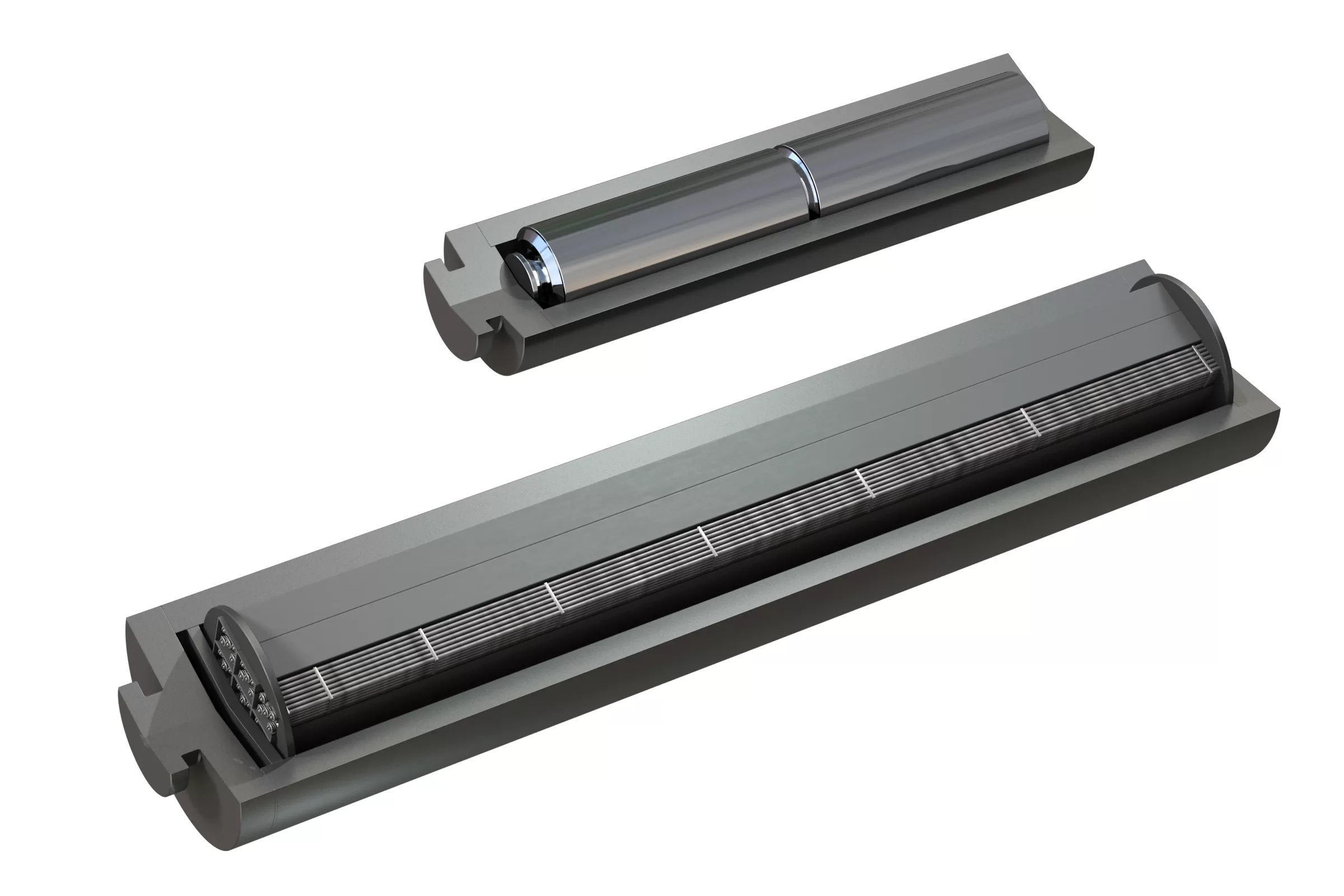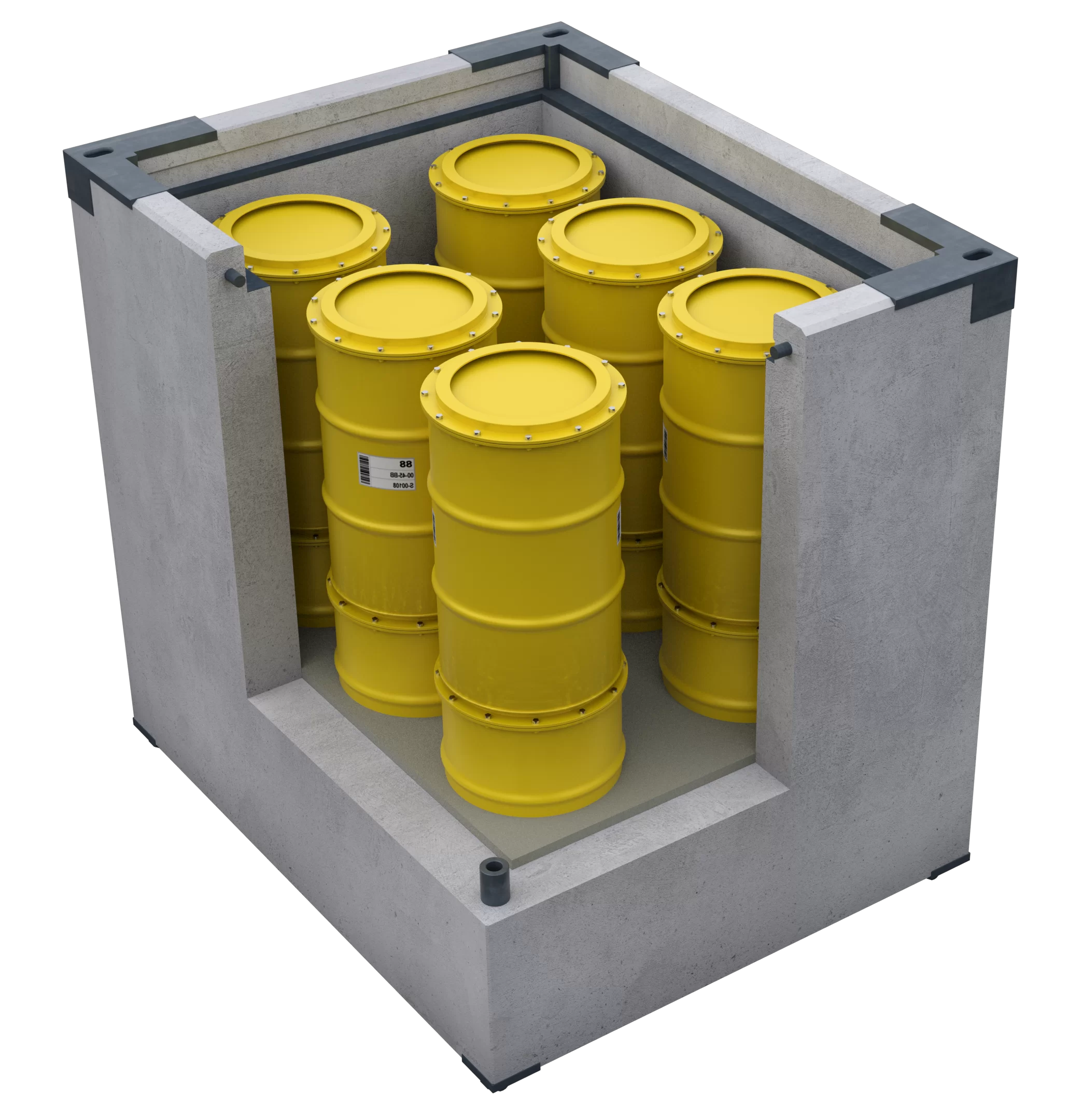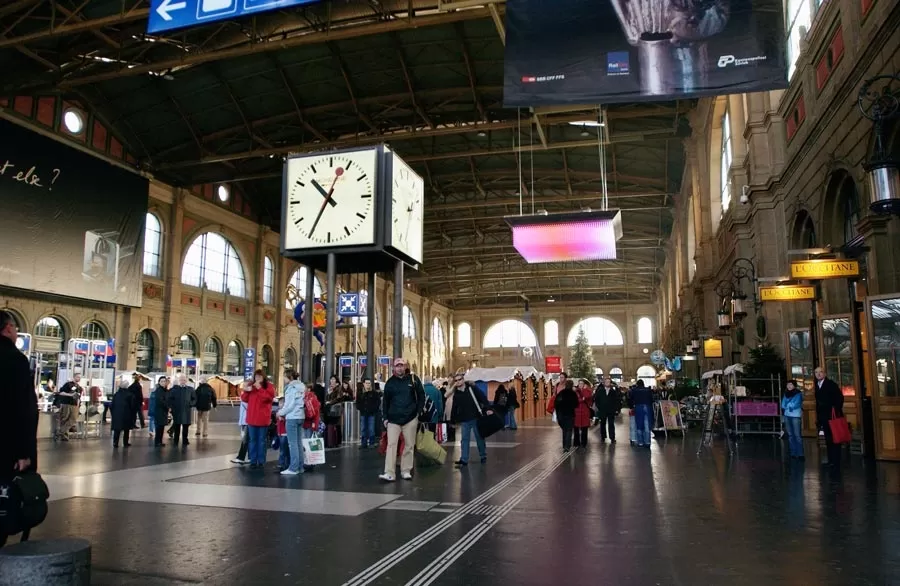Volumes of radioactive waste
High-level waste
The Swiss nuclear power plants will produce a total of around 1500 cubic metres of high-level waste over their operating lifetime. This volume corresponds to the scenario of a 60-year operating lifetime for the Beznau, Gösgen and Leibstadt nuclear power plants and 47 years of power generation for the Mühleberg nuclear power plant. The high-level waste is made up of around 1400 cubic metres of spent fuel assemblies and around 100 cubic metres of high-level waste from reprocessing.
These two types of high-level waste will later be packaged in disposal canisters for deep geological disposal. At around 9300 cubic metres, the packaged volume roughly corresponds to the size of eight single-family homes.

Low- and intermediate-level waste
Most radioactive waste (56 000 cubic metres) is low- and intermediate-level waste (including disposal containers). Approximately half consists of waste expected from the dismantling of the nuclear power plants. Another approximately 16 000 cubic metres will be produced by applications in medicine, industry and research (MIR waste).

Nagra inventories all waste types
Nagra maintains a central inventory: the ISRAM (Information System for Radioactive Materials) database systematically records the volumes as well as the chemical and physical properties of the existing waste. ISRAM documents the radioactive waste produced by nuclear power plants and held in interim storage facilities as well as the waste from medicine, industry and research.
An additional database, MIRAM (Model Inventory of Radioactive Materials), is based on ISRAM and is a model inventory for existing waste as well as for waste that will arise in the future. Nagra has to know today how much waste will eventually be disposed of in a deep geological repository and what properties the respective waste types will have. With this information, it can plan a sufficiently large repository and provide solid data for safety analyses.

Waste volumes today
Until a deep geological repository has been constructed, Switzerland has sufficient interim storage capacity for all of the radioactive waste arising from the operation and decommissioning of the five nuclear power plants. There is also sufficient interim storage capacity for the waste arising from applications in medicine, industry and research.
| At the nuclear power plants | 3365 |
| In the storage halls of the Zwilag interim storage facility | 2685 |
| In the Swiss Federal Interim Storage Facility (waste from medicine, industry and research) |
1606 |